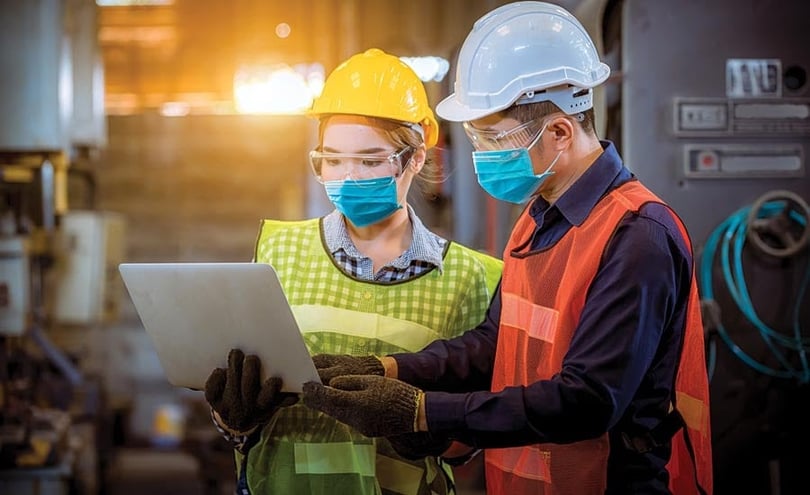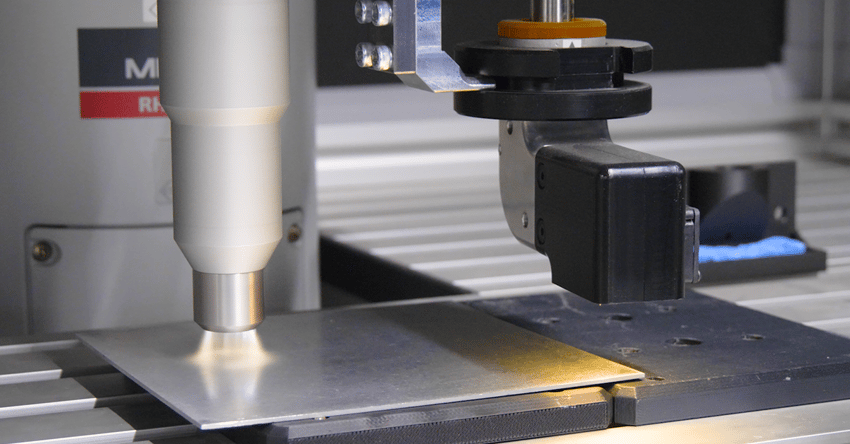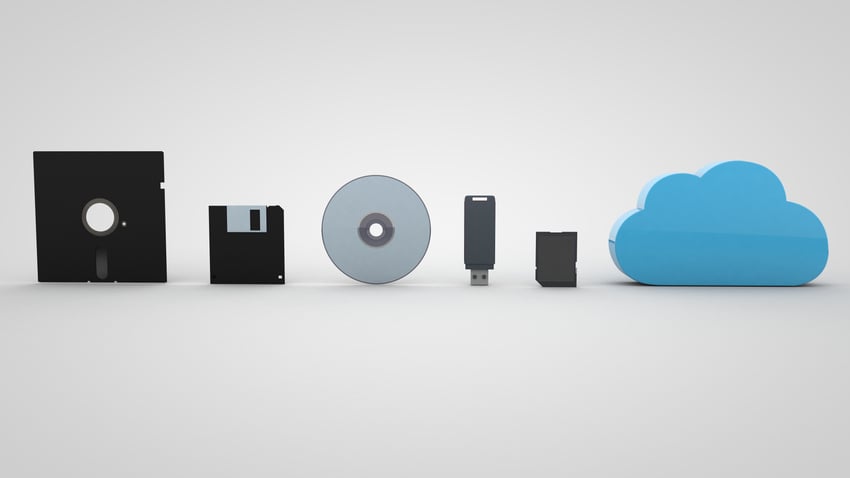Change is perhaps the one absolute constant in manufacturing. Developments - in materials, processes, machinery, testing, products, markets, and thousands of other things affecting manufacturing companies - happen daily.
To remain cutting-edge, optimally efficient, positively adaptable, and highly profitable, companies need to track industry trends and incorporate them into their process designs and models. Industry experts are always discussing what's current and what’s coming next. To help you cut through the noise and find useful information within the chatter, we’ve collected the top five areas shaping the future of manufacturing. These are the most important things to pay attention to for companies that want to ensure the future-proofing of their processes.
Rethink your adhesion manufacturing processes with Surface Intelligence.
1. Industry 4.0
Most experts say the current industrial epoch, this “fourth industrial revolution” or industry 4.0, didn’t happen overnight but evolved over a couple of decades as programmable and intelligent technologies became increasingly present within manufacturing processes. In some areas, this meant the introduction of efficient machines and automation.
When we speak about automation in this context, we speak about any general augmentation of labor through technology to make manufacturing more predictable and reliable.
Industry 4.0 has ushered in the ability to measure the production line as a product is being produced. Thus, automatic adjustments can be made in real-time, facilitating manufacturing operation decisions. The use of technology and data to more accurately define the controllable elements of production means that fewer aspects can be left up to chance.
Manufacturing processes change based on data. The more meaningful data collected, the more intelligent the process. When an alert can be instantly sent to a process engineer as a result of an automatic change that occurred because set parameters were plugged into a machine or sensor and that machine or sensor identified, in real time, a deviation from the specification, this is the smart factory that Industry 4.0 describes.
Companies are constantly adopting new technologies to achieve smarter manufacturing operations. These technologies are making facilities more efficient, powerful, and connected than ever, leading to the next big trend in manufacturing.
2. IIoT
The Industrial Internet of Things, or IIoT, is the name given to the network of physical sensors that are connected to the cloud. This allows us to collect data about individual elements of the factory floor, including equipment that’s already connected or equipment that's being upgraded to be connected.
These sensors could include control units on plasma treatment equipment to know what happens as materials are being treated. This is also the use of digital surface inspection equipment that allows manufacturers to quantify material surface quality and cleanliness for the first time.
The critical data collected by IIoT devices allows manufacturers to control inputs they previously could not measure or manage.
IIoT allows manufacturers to wring out every bit of performance and reliability from their manufacturing processes. Process improvement is where companies can have the greatest impact on their progress towards higher efficiency and reliability to remain competitive. Since the most recent significant advancements in materials happened in the 1990s, manufacturers are looking to improve processes through data collection and analysis.
One of the exciting aspects of using this data is the predictive potential of the measurements being taken and the hidden aspects of processes being made visible. Combining data from many different sources creates a holistic map of processes that was never possible before. This enriched data allows manufacturers to prevent mistakes before they occur and spot new trends that they want to encourage in their processes. The sensors that make up the IIoT world can discover new efficiencies and highlight quicker paths to better products.
3. Automation
Automation as a concept isn’t a novel trend in manufacturing, but it’s finding its way into aspects of production and design processes that it hadn’t previously reached.
Automated joining, assembling, and dispensing of adhesives and coatings have been used for consistency and speed for years. However, automated, digital surface quality inspection and plasma treatment through the use of robots are just a couple of ways that automation has extended beyond just replacing a rivet gun or a paintbrush.
Automation continues to be a trend in manufacturing. As manufacturing processes and materials change, the need for new measurement technology that fits into the Industry 4.0 and IIoT framework is crucial to making the smart factory a reality. As materials change to meet the demands of lightweighting trends and consumer product design innovations, manufacturers have necessarily shifted to bonding as opposed to bulky fasteners.
Implementing automation within manufacturing processes where it wasn’t previously used or expected is changing what characteristics are possible for products on a massive scale.
4. Personalization
Manufacturing of almost every product has become hyper-individualized. For instance, people are ordering custom cars from vehicle manufacturers the same way they can build custom sneakers from Nike.
Many elements, including paint color, can be personalized with vehicles. For coatings, the trend of personalization means manufacturers need to control their material surfaces to ensure quality output.
Personalization can easily lead to a lack of consistency. If you do not know the data required for a particular paint or coating to stick properly, then you won’t be able to ensure the quality of the customized product.
Customization is the opposite of standardization, but it doesn’t have to mean the sacrifice of reliability. Customers are always looking for more choices, and personalization equals complexity and small runs in manufacturing. This means there aren’t prototypes, changeover happens more often, and there’s less time between changeovers. In order to make this trend a viable one to keep up with, manufacturers need additional data and sensors to be flexible and change on the fly when a new choice is made.
5. Sustainability
A very recent development in materials has been finding and creating more ecologically friendly substances. For example, P&G committed to eliminating petroleum-based plastics by 2040. This requires major adjustment and innovation. Mushroom-based packaging is becoming a viable option for some industries.
Sustainability is involved in the discussion about water-based paints and inks or low-volatile organic compounds (VOC) materials. Companies will be switching to these types of materials more and more in the coming years, and it’s important to understand and gather data on how to get the same level of reliability out of products built using these materials.
More data is required from the outset to streamline processes and produce less waste, creating more sustainable production processes.
A movement towards sustainability means removing harsh chemicals in the factory, using materials from sources that are not damaging to the planet, and needing to do more with less.
This trend involves removing primers and wet chemistry processes and replacing them with surface treatment and environmentally-friendly technologies like plasma treatment, enabling companies to remove primers and wet chemistry for cleaning operations. Plasma technology has advanced greatly in the last several years and can be applied widely in manufacturing, cleaning, coating, etching, and many other processes.
Optimize the power of next-gen connectivity with data & surface intelligence.
Looking to the Future
Manufacturing trends will continue to change, and companies that equip themselves with technology that allows them to adapt with the least amount of pain, downtime, or overhaul will be able to withstand any changes that the future holds.
With the right sensors and data collectors, manufacturers are enabled to foresee obstacles to change, test quickly to ensure changes have a low impact on output reliability, and design flexible processes that scale quickly to production.
Digital transformation is revolutionizing the manufacturing industry, and the integration of surface analysis technologies is at the forefront of this change. By harnessing the power of digitalization, businesses can significantly enhance decision-making, optimize equipment efficiency, and accelerate innovation. To learn more about how your organization can capitalize on these trends, download our eBook, "Digital Transformation: Why it’s real. Why it matters. And why you need it now."








